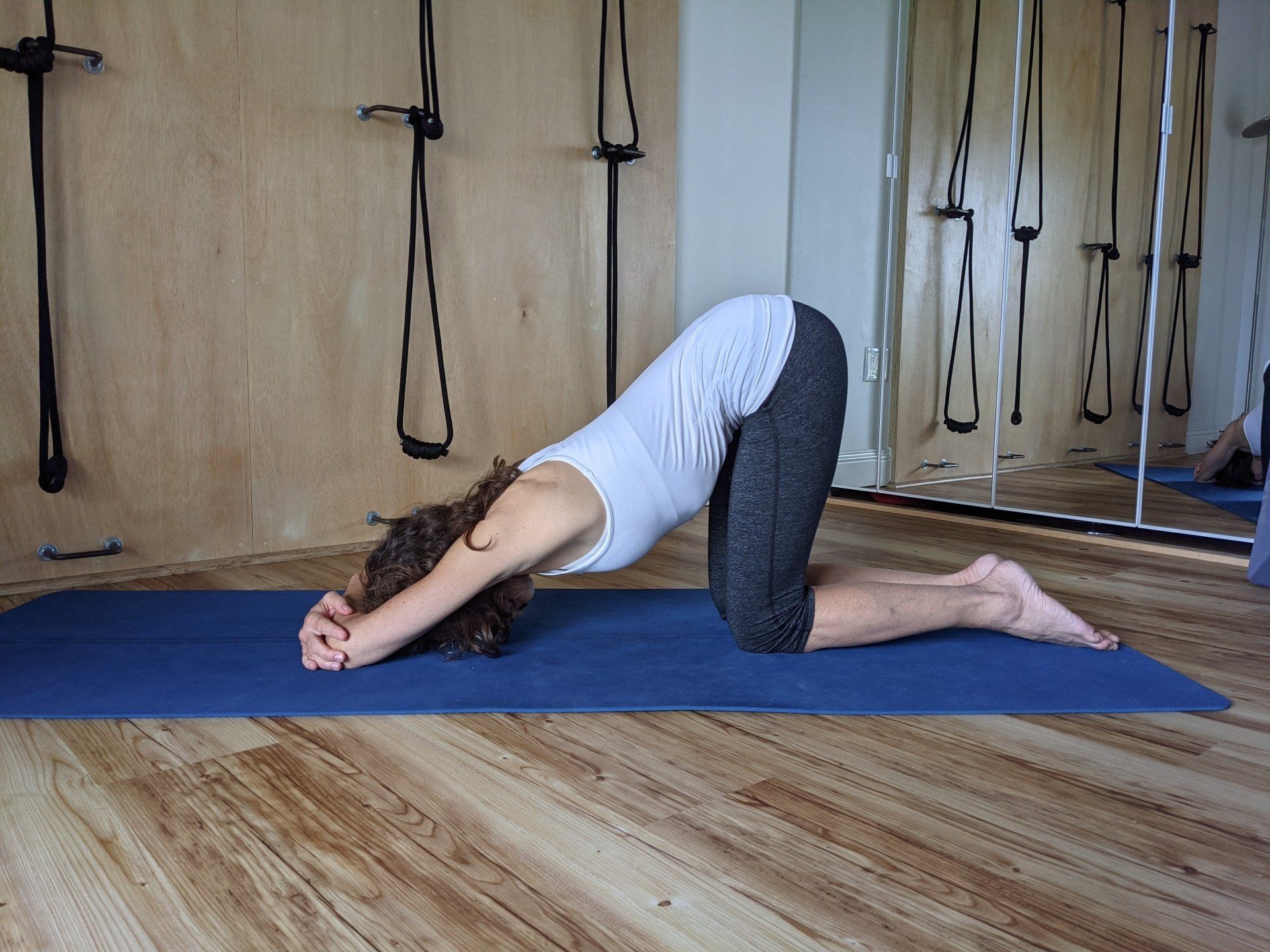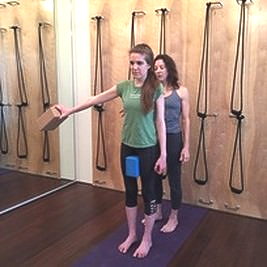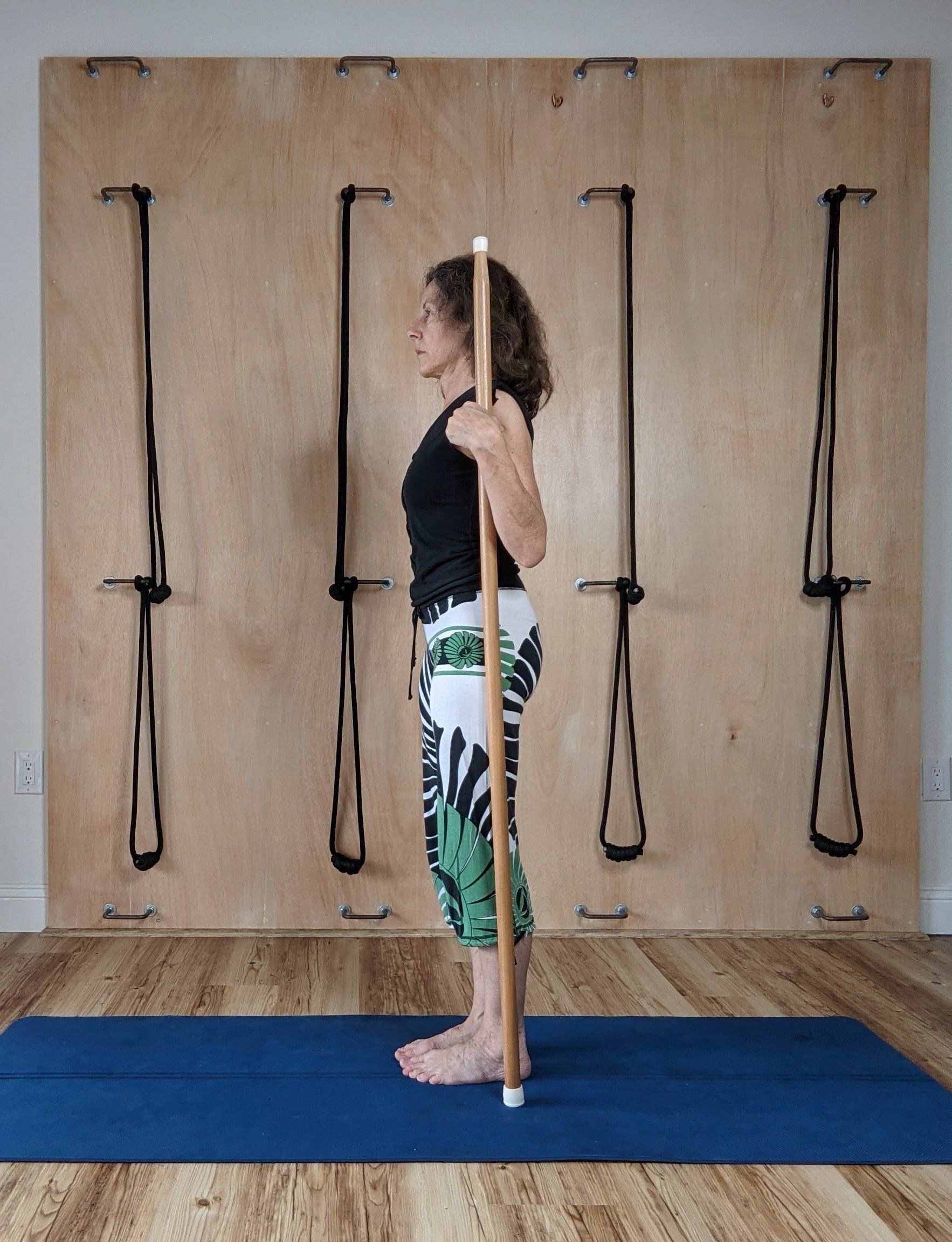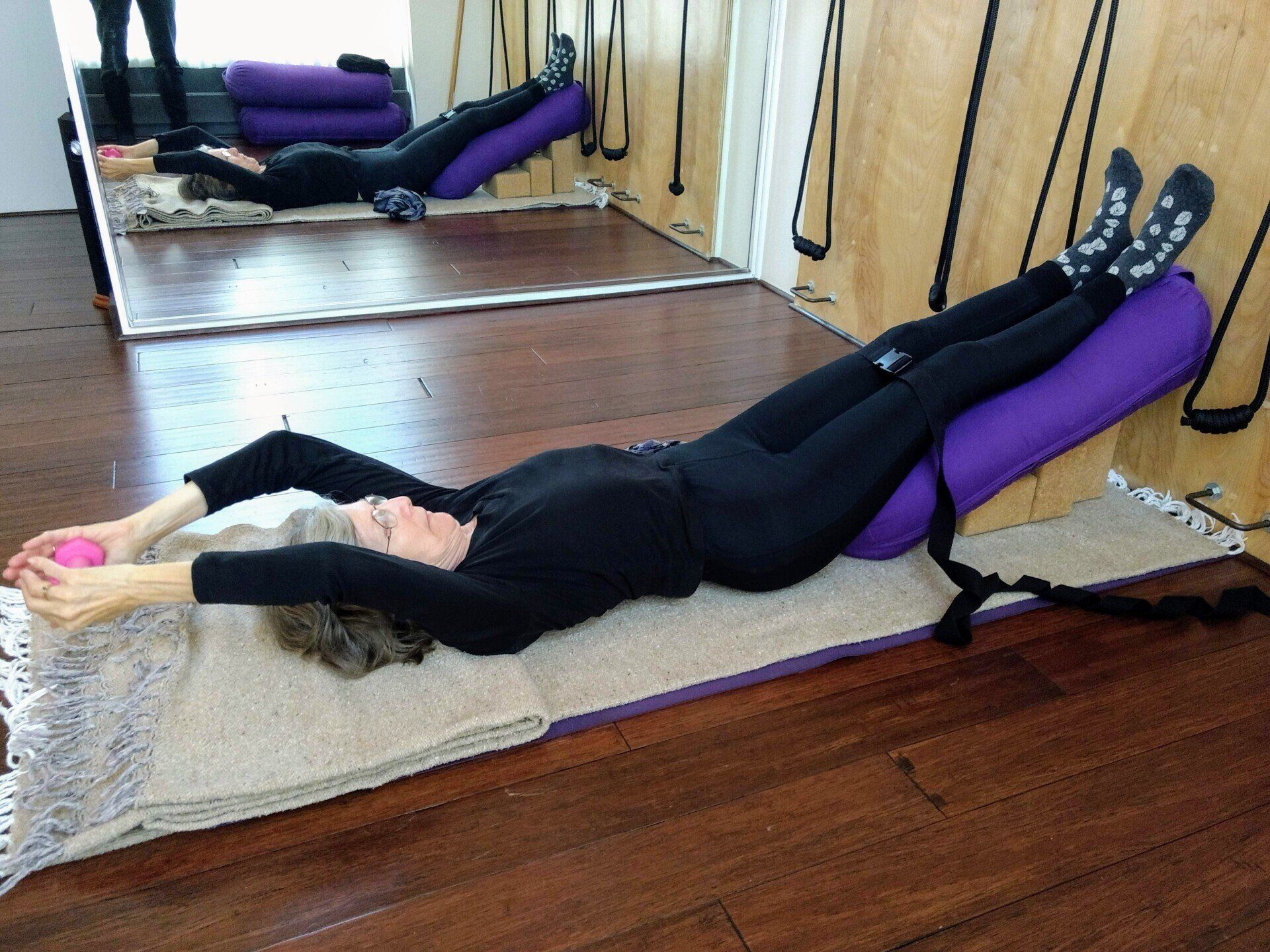In the news

Nearly any article I come across for improving back pain will invariably recommend the cat/cow exercise (a repeated arching and rounding of the spine). This is a thoughtless, rather than thoughtful addition to a sequence for back pain. Anyone providing recommendations to total strangers should only include harmless exercise with consideration of what potential serious issues can be creating back pain. While some people searching the internet for back pain relief may have no damage in their spine whatsoever, many have serious issues for which cat/cow is contraindicated and harmful such as: disc herniation; spinal stenosis; spondylolisthesis; or scoliosis. Cat/cow would aggravate and worsen each of these conditions. Moreover, when a spine is in enough distress that someone is searching for relief, often in the form of back spasms or the feeling of a pulled muscle, that spine will respond much better to stability work performed in neutral spine alignment rather than excessive motion. In fact, most likely the reason an otherwise healthy spine would be in distress, would be because of lack of awareness of neutral spine alignment as they were performing some task, exercise, or just sitting or standing in misalignment. A muscle in spasm is asking to return to its normal resting length rather than being stretched. The takeaway here is that it is much better and useful to teach neutral spine work rather than repeatedly and mindlessly including cat/cow not knowing what brought the reader to you. If you would like to learn neutral spine work, contact me at SarasotaScoliosis.com. Jane DoCampo is certified by the International Association of Yoga Therapists and is a NASM corrective exercise specialist specializing in scoliosis, herniation, and pelvic floor dysfunction.

Many of us share this story: We attend a yoga class or two, return with increasing regularity, and soon make room in our lives for our practice. (Some of us even organize our lives around our practice.) It's something we can't pinpoint at first, but we recognize its goodness, the way we feel after practice, and it keeps us coming back. Yoga is endlessly fascinating, asking us to coordinate our body parts into a vast array of shapes and examine our possible resistance (physical or mental) to said shapes. There is the excitement of feeling stronger and progressing as gradually we gain understanding of opposing energetic forces, inner & outer body awareness, how our breath mobilizes the body and makes the whole practice a moving meditation. I moved through this progression over years, eventually becoming a teacher of students of all ability levels, striving for more clarity and precision in my teaching, working to keep my students safe and aligned (and safety is a challenge for so many reasons: a student could have innate postural imbalances that aren't being properly addressed as they practice leading to injury; they may push ahead into a shape before they have all the information to proceed knowledgeably; they may be working in a way that creates instability when what everyone needs is stability, etc.). And then I began studying with Alison West of Yoga Union, NYC and learned the Ropes! Wall ropes are an unmatchable teaching tool. They are a speed course to greater understanding, strength and refinement of the asana practice. In the hands of a skillful teacher, they retrain your body, your proprioception and correct imbalances. Ropes let you feel with great clarity the intent behind each pose and keep your body safe in increasingly deeper shapes. You feel even better after a ropes practice because you've tractioned your spine and avoided working in habitual, negative postural patterns. And when you practice out of the ropes, you take that knowledge with you for a safer, more productive practice. For beginning and advanced practitioners, those, like myself, working with herniation or scoliosis, athletes who become imbalanced from playing a one-sided sport, or those recovering from other injuries, wall ropes are a wonderful tool to inform and work productively to improve their backs and entire bodies and stay as strong as you want to be! I see remarkable results in my students and feel limited when I'm teaching without this equipment.

Should I get a cortisone injection? When we have back pain, and we can often extend this to include shoulder pain and hip pain (because these are both heavily influenced by spinal alignment), it's a common practice to want a quick fix like a cortisone injection or pain medicine. Sometimes we opt for a nerve block or surgery that we think will fix the problem...anything to deaden the sensation of pain. What is my back pain telling me? Back or joint pain is certainly no fun, but it gives us a lot of information, if we'll listen to it. It tells us where we are out of balance. What muscles are too tight and which are too loose? Am I compressing the front, back or sides of my spine, and at which level? What's over-efforting? What's under-efforting? Are my legs and core helping me enough? Are my shoulders overworking because my core is underworking? How should I alter my approach to working out because of back pain? Make sure you understand your imaging report. I believe there are no shortcuts. We can enlist aid, but we have to take the long view of what's creating the problem. We need to educate ourselves about our imaging report. Don't place your blind trust in a doctor to fix you. Master neutral spine and body position. (In almost 100% of cases, stop doing cat/cow!) And do the appropriate physical work to resolve the misalignments, structural imbalances, and weaknesses that fail to support your joints. This is the only real way to take pressure off the nerve that is sending the pain signals. A quick fix is not a permanent solution. A quick 'fix' will mask the underlying problem and allow the misalignments to continue so the pain will show up again...and probably worse. Take time. Gather information. Look at a dermatome map. That will tell you which nerve is compressed by the body part that is affected. Correct your alignment for a real solution to back pain. Decompression (taking body weight and pressure off the nerve), postural correction , and targeted positional exercise to strengthen your weaknesses to be able to hold the corrected alignment, is the only solution. There are no shortcuts. If you need help understanding your imaging report, or productive ways to exercise for your condition, I can help you!

Physical Training is Essential to Improve Scoliosis - How Curve Specific Scoliosis Exercise Can Help
I read so often in scoliosis forums and support groups about people who have undergone bracing or surgery to treat their scoliosis, but next to nothing about the importance of training the body to improve itself alongside, or in place or, these treatments. I find that many people who have tried a brace or surgery to correct their scoliosis still experience pain and discomfort. I feel very strongly that every doctor or physical therapist who treats someone with scoliosis should teach them curve specific exercise, or refer them to someone who can. Just as we learn a job, a sport, an instrument, or any other skill, a person with scoliosis needs to: Learn essential skills to improve awareness, coordination, body position, and strength. Curve specific training can help people with scoliosis to feel better by relieving pain, and improving posture in the long term. It is crucial to: 1. Move the curve in and move the concavity out Your skilled scoliosis teacher can bring your attention to the location of your curves and give you exercises to contract and build strength in muscles that are over-lengthened, fatigued, and weakened around the curve. Different exercises will expand and build strength in muscles on your concave side that are shortened, underutilized, and also weak. This way, you can develop enough strength to restrain the progression of your scoliotic pattern and begin to reverse it while relieving aggravated muscles. 2. Elongate to decompress the spine Besides working with your lateral curves, you can learn actions to move out of hyper-kyphosis or hyper-lordosis, which are compressive in either the front or back of the spine, and build knowledge and enough strength to maintain a more neutral lengthened spine. These interventions can reduce muscle strain, the entrapment of nerves, wear and tear on the joints of the spine and elsewhere, and improve organ function. 3. Recognize how the rotation of your spine is affecting your whole body Scoliosis can create pain and wear and tear in the neck, shoulders, back, chest, pelvis, knees, and feet. Learn to de-rotate the spine and train your musculature to support better positioning from head to toe to find relief. 4. Empower yourself with the right tools Braces and surgery are passive treatments and will not teach your body how to address the underlying momentum of scoliosis-a lifelong condition. Braces and surgery should always be paired, or in many instances replaced, with appropriate positional, strength and awareness training of the body and mind.
Let's Talk
My back care clients often find me when they have tried everything else but are still suffering. Let's get started on a personalized plan to improve your condition. I want to empower you with the tools to move your life in a positive direction.

